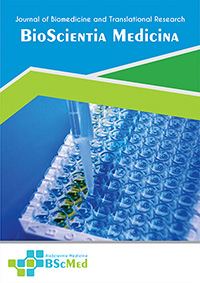Main Article Content
Abstract
Background: Primary malignant peritoneal mesothelioma (PMPM) is an uncommon and aggressive malignancy arising from the mesothelial lining of the peritoneal cavity. The diagnosis of PMPM is often challenging due to its rarity, nonspecific clinical presentation, and histologic similarities to other malignancies, particularly adenocarcinomas. Immunohistochemistry plays a crucial role in differentiating PMPM from metastatic adenocarcinoma, which is essential for accurate diagnosis, appropriate treatment, and prognostication.
Case presentation: We present the case of a 43-year-old female who presented with abdominal distension, ascites, and weight loss, initially raising suspicion of ovarian carcinoma. However, histopathological examination of the omental tissue revealed a proliferation of epithelial cells with papillary and glandular-like growth patterns. Immunohistochemical staining demonstrated strong positivity for calretinin, a mesothelial marker, while staining for estrogen receptor (ER) and progesterone receptor (PR) was negative, effectively ruling out an ovarian or endometrial origin. The diagnosis of PMPM, epithelioid subtype, was confirmed.
Conclusion: This case underscores the challenges in diagnosing PMPM and highlights the critical role of immunohistochemistry in differentiating it from metastatic adenocarcinoma. Accurate diagnosis is essential for determining appropriate management strategies and providing prognostic information.
Keywords
Article Details
As our aim is to disseminate original research article, hence the publishing right is a necessary one. The publishing right is needed in order to reach the agreement between the author and publisher. As the journal is fully open access, the authors will sign an exclusive license agreement.
The authors have the right to:
- Share their article in the same ways permitted to third parties under the relevant user license.
- Retain copyright, patent, trademark and other intellectual property rights including research data.
- Proper attribution and credit for the published work.
For the open access article, the publisher is granted to the following right.
- The non-exclusive right to publish the article and grant right to others.
- For the published article, the publisher applied for the Creative Commons Attribution-NonCommercial-ShareAlike 4.0 International License.





